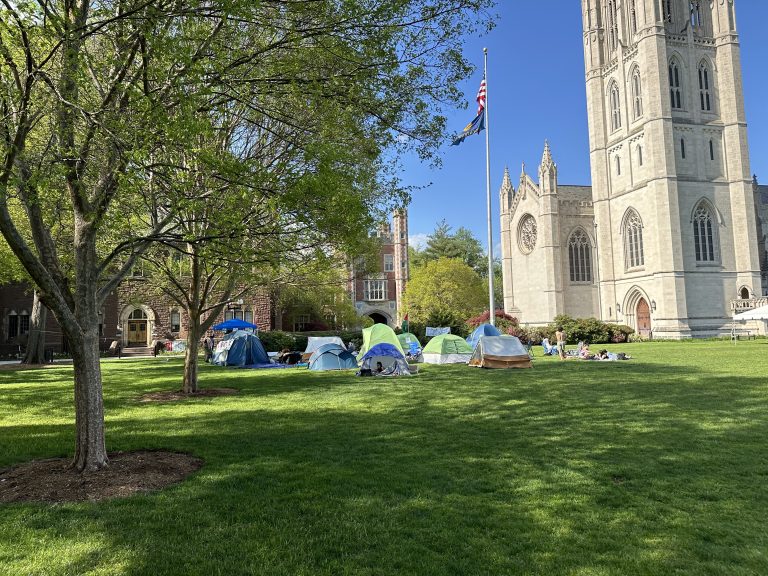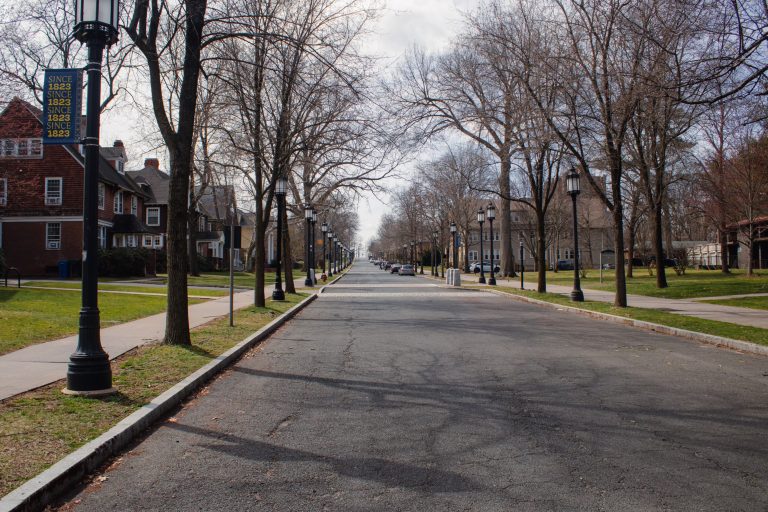GILLIAN REINHARD ’20
NEWS EDITOR
While Trinity often finds itself listed with peer schools in areas of academic success, alumni involvement and general prestige, the College recently appeared in a different ranking. The New York Times reported Trinity College fifth in a list of schools with more students from the top 1% than the bottom 60% of family income. With the goal of better understanding the socioeconomic dynamics of American universities, the study examined anonymized tax returns in correlation with attendance at schools across the country.
The top 1%, as defined by the article, is those American families with an income at or higher than $630,000 annually. The bottom 60% is identified as having an income lower than $65,000 annually. Trinity was reported as having 26.2% students coming from the top 1%, while just 14.3% of all students come from the bottom 60% of Americans. While Trinity ranked fifth for poor socioeconomic diversity, Washington University in St. Louis topped the list with 21.7% of students from the highest incomes in the United States and just 6.1% of students from the bottom 1%. The top ten was rounded out by peer institutions such as Colorado College (2nd), Bucknell University (6th), and Colgate University (7th), in addition to NESCAC rivals Colby (4th), Middlebury (9th), and Tufts (10th).
The study identified Trinity as an “elite” college, described by analysts as schools which “typically cluster at the top of annual rankings.” Upon evaluation of all elite colleges, the University of California, Los Angeles scored best for socioeconomic diversity, with 19.2% of all students originating from the bottom 40%. Emory University (2nd) and Barnard College (3rd) followed closely behind. None of the NESCAC schools were ranked in the top ten elite colleges with the most students from low-income backgrounds. When all colleges in the United States, not just those deemed elite, were evaluated by the study, the Vaughn College of Aeronautics and Technology in Queens, New York was ranked number one for highest amount of students from low-income families, with two out of every three students originating from the bottom 40%. The school was followed by the City College of New York (2nd) and Texas A&M International University (3rd).
Writers of The New York Times article were highly critical of elite colleges’ approach to creating socioeconomic diversity within their institutions. Danny Yagan, an assistant professor at the University of California, Berkeley and co-author of the study, commented that “free tuition only helps if you can get in.” His explanation of poor representation of low-income students at Trinity and peer schools was focused on the obstacles faced by underprivileged students rather than colleges’ lack of affordability for admitted students.
Socioeconomic diversity has been a complex issue at US schools for decades. While government aid in the form of federal loans and grants, in particular, the Pell Grant Program, exist, the stark contrasts of socioeconomic positions on all college campuses are apparent. As the College grapples with the demands of the Action Coalition of Trinity (ACT) and changes in the United States’ government, a critical look into socioeconomic diversity is particularly relevant.
“This is a great source of information that we can use to create new opportunities for students of all backgrounds and socioeconomic statuses,” said President Joanne Berger-Sweeney, in response to the article. “The value of an education is to increase upward social mobility.” President Berger-Sweeney also emphasized the benefits and advantages of having a large population of students from the top 1%, citing career opportunities and networking possibilities.
Although the school’s socioeconomic ranking poorly reflects values of diversity and inclusivity at Trinity, other statistics can be used to create a more positive vision. As clearly stated by the Trinity College Office of Admissions, 40% of all students receive some form of financial aid from the school, while an additional 5% of students receive federal, state, and private funding. Trinity’s mission statement seems to similarly reflect these goals, promising to “link students, faculty and staff to form a diverse community of learning.”
A study by the Connecticut Post provided another, more positive evaluation of socioeconomic diversity at Trinity. While analysts agree that Trinity and many of its’ peer schools have a disproportionate number of students from the top 1% and bottom 60%, the Connecticut Post ranked Trinity well for social mobility, meaning that students who originate from low-income backgrounds are highly likely to move out of poverty after graduating college. Trinity reported impressive statistics, particularly in comparison to peer institutions. Trinity students have a 55% chance of moving from a poor background to a more affluent future post-graduation. Peer schools such as Wesleyan University (at a 47% chance) and Connecticut College (51% chance) have slightly lower statistics. In addition, the average Trinity graduate (regardless of family background) at age thirty-four has an average annual income of $67,300, a significantly larger salary than both Wesleyan ($56,500) and Connecticut College ($55,500).
Despite this, the study presented by The New York Times remains an important reminder of the socioeconomic barriers Trinity still must work to overcome. “This article opens up a discussion about the Trinity community and what we want for it,” commented President Berger-Sweeney, “We can do better.”
Thursday, June 6 2024
The Student Newspaper at Trinity College in Hartford, Connecticut








+ There are no comments
Add yours